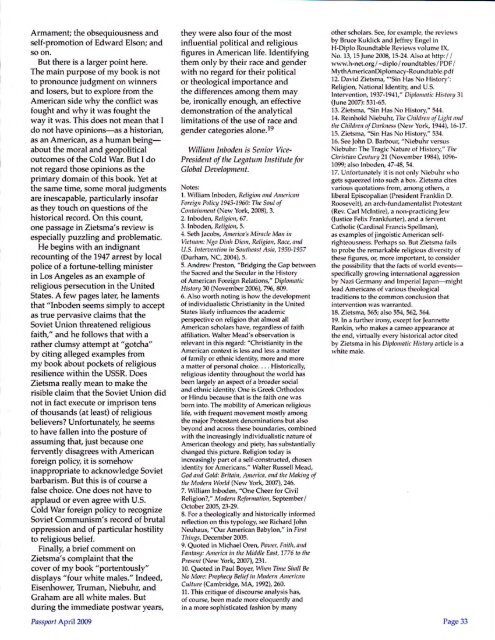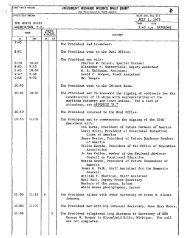MERSHON CENTER FOR INTERNATIONAL SECURITYSTUDIES ATTHE OHIO STATE UNIVERSITYSEEKS APPLICATIONS IN PEACE STUDIESThe MeBhon Center for Intemational Secudty Studles at The Ohio Stat6Uniwrsity is se€king appllcants for one of several possible positions open in thearea of peace studies.1. Endowed Chair in Peace Studi$. The Mershon Centor is se€klng applicationsfor its Endoryed Chalr In Peace Studies. This is a sonior tenured position as afull professor. The purpos€ of the chair is b promote research and educationon the foundatons of peaoe and strategiE3 for conflic-t resolution. The chair willb€ oxp€c-bd io design a broad pogram in p€ace studies that complem€ntsothor aclivities at the Mershon Center. We aro open as to the bsckground anddiscipline of the candidate. Scholars at ths Mershon Cent€r come fiom a varigtyof departments induding political scienc€, history, sociology, psychology, law, andphilosophy. A distinguish€d r€cod of publication and teaching is expected. Weare also Interosted in candidates who have experien@ dealing wlth vlol€nt conflictand lts aflemath In either a govemmental or non-govammental context. The chairwlll b€ exp€c'ted to carry a half-tlmo teaching load, devoting th6 other half of his orher tme to aclivities at the Mershon Center, which will include both rosoarch andpractical pursultB related to peace studies.2. Visiting Inslrudors in Peace and Conf,ict Resolulion. The Mershon Centar alsowelcomes applicstions for visiting instructors in p€ace and @nflicl rsolution.Ph.D. is r€quired by August 2009, and proference will b€ given to those with aPh.D. and teaching experience. ytsltlng instructoB wlll teach one course €achquarter, or thr€€ courses a yaar. One @urse may bo taught twice. We are opena8 to ths discipllne of the candldates, but they must d€monstrais the abillty toteach coursas In peacs and conf,ic{ rssolution In a recognized dlsclpline or in OhioState's interdisciplinary Int€matlonal Studies Pr€ram. Msiting instructors will b€€xp€cted b pariicipate in the activiti€s of the Mershon Center.3. Msiting Scholar in Peace Studies. The Mershon Center also wolcom€sapplications for visiting scholars to do r€search in p6ace studios and participatein the actlvitios of lhe Mershon C€nter. They may b€ in residenc. at the centsr foran!,wher€ from one !o nine months. Visrung scholars may be senior practitionerswlth expedence n€gotiating for a govemment agency or non{ovemmentalorganization, or they may b€ establlshed academics with a solirt r€cord ofrcsearch.The Mershon Cenbr is not likely to fill all thre€ positions in peace studles; thesxac-t positions we decide to fill are contingont on funding and on the applicationswe rec€ive. Th€ search wlll remain open until the Endowed Chalr in Peac€ Studiesis f,lled.Th6 Mershon C€nter for Intemational S€curity Studies advanc€s theunderstanding of national security In a global contaxt by fostering intE disciplinaryfaculty and student res€arch in thr€€ areas of focus: the use of force anddiplomacy the ideas, identities, and decisional process€s that afiBct securityi andlhe Instltutons that manage violent connid. For more infomation, please se€ the@nter's wob site at http://mershoncenlsr.osu.edu.Applicants for any of the thr€e positions should submit a letter of Intersst, currntcuniculum vitae or r6sume, and the names of three refer6nc€6 to:Page 32Poace Studies SearchMershon C€nter for Intomational Security Studiss1501 Nell Ave.Columbus, OH 4320'l -2602Ath: Melanle Mannleaders justified or rationalizedmany policies in this light. Yet it isnot implausible that a nation thatwitnessed, in the span of less thana decade, the Japanese invasionof Chin4 the Rape of Nanking,tlra Anschluss, the arurexation ofthe Sudetenland, Kristallnacht, theMolotov-Ribbentrop Pact, Germany'sinvasion of Poland, Germany'sinvasions of Denmark, Norway,France, and the Low Countries, theTripartite Pact, the Japanese invasionof Indochina the Grcater East AsiaCo Prosperi ty Sphere, etc., wouldinterpret these events througha moral, religious, and poliHcalframework and shape its words andactions accordingly.lg It is a questionof causality and complexity. Zietsmaseems to cast America's belief inits own righteousness as a cynicalcontrivance, almost divorced fromthe context of profoundly troublingworld developments, but it is perhapsbetter understood as the outgrowthof an effort by American leaderc todraw on their own convictions andtheir nation's religious and moraltraditions to interpret these eventsand determine how to act.This interpr€tation by no meansimplies agreement with-let aloneunapologetic cheerleading for
Armamen| the obsequiousness andself-promotion of Edward Elson; andso on.But there is a larger point her€.The main purpose of my book is notto pronounce judgment on winnersand losers, but to explore from theAmerican side why the conflict wasfought and why it was fought theway it was. This does not mean that Ido not have opinions-as a historian,as an American, as a human beingaboutthe moral and geopoliticaloutcomes of the Cold War. But I donot regard those opinions as theprinlary domain of this book. Yet atthe same time, some moral iudgmentsare inescapable particularly insofaras they touch on questions of thehistorical record. On this count,one passage in Zietsma's review isespecially puzzling and problematic.He begins with an indignantrecounting of the 1947 arrest by localpolice of a fortune-telling ministerin los Angeles as an example ofreligious persecution in the UnitedStates. A few pages later, he lamentsthat "lnboden seemsimply to acceptas true pervasive claims that theSoviet Union threatened rcligiousfaith." and he follows that with arather clumsy attempt at "gotcha"by citing alleged examples frommy book about pockets of rcligiousresilience within the USSR. DoesZietsma really mean to make therisible claim that the Soviet Union didnot in fact execute or imDrison tensof thousands (at least) oi religiousbelievers? Unfortunately, he seemsto have fallen into the posture ofassuming that, iust because onefervently disagrees with Ame canforeign policy, it is somehowinappropriate to acknowledge Sovietbarbarism. But this is of course afalse choice. One does not have toapplaud or even agree with U.S.Cold War forcign policy to rccognizeSoviet Communism's record of brutaloppression and of particular hostilityto religious belief.Finally, a brief comment onZietsma's complainthat thecover of my book "portentously"displays "four white males." Indeed,Eisenhoweq, Trumaru Niebufu, andGraham are all white males. Butduring the immediate postwar years,Passryrt Aprilz0@they were also four of the mostinfluential political and religiousfigures in American life. Identifyingthem only by their race and genderwith no regard for their politicalor theological importance andthe differences among them maybe, ironically enough, an effectivedemonstration of the analyticallimitations of the us€ of race andgender categories alone.l9William Inboden is Scnior Vice-Prcsident of the Legatnn lnstitute forGlobal Deuelopment.Notes:l. Wifliam Inboden, Rrlitiott dli At],cricirrForcign Policy 1 5.1960: Thc Sorl ofCoxr.rir,[.,rt (New York 2m8), 3,2. Inboden, Rrl{giox, 67.3. Inboderr Raligio,r, 5.4. Seth Jacobt Ar,'ric.r's Mimch Md itlVid nu: Ngo Ditlt Dict , Rclighn, Rdce, atdU.S. ht,cr,'c tioni Sot hcost Asid,1950-1957(Durham, NC, 2004), 5.5. Andrcw Preston, "Bridging the Gap betweenthe Sacred and the Secular in the Historyof American Foreign Relationt" Dr'plornticHisfory 30 (Novembcr 20n61,7 ,W.6. Also worth noting is how the developmentof individualistic Christianity in the UnitedStates likely innuences the acadcmicp€Fpective on religion that almost allAmerican scholars have r€gadless of faithafffliation. Walter Mead's observation isrelevant in this regard: "Christianity in theAmerican contert is less and less a matterof family orethnic identity, more and morea matter of personal choi






